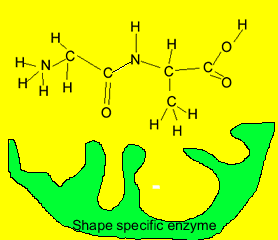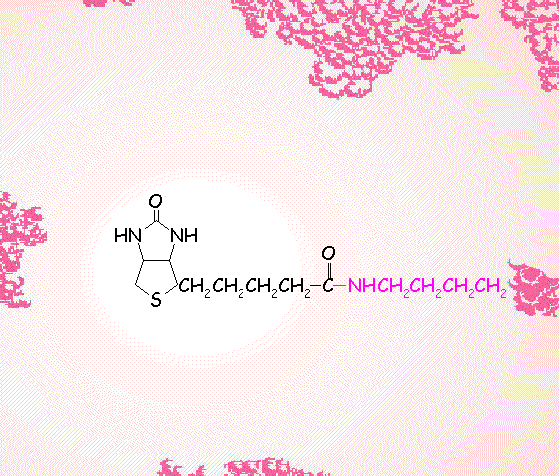
Enzymes catalyse
reactions in living organisms. They facilitate reactions that would otherwise
not take place at the temperature of the body. The shape of the enzyme
is crucial and it is specific for the reactants of the reaction taking
place.
The location where reactants attach is known as the active site.
This part of the molecule has a specific shape that accommodates the reactant
molecules. Bonds are easily broken when the reactants sit on the enzyme
as shown in the animation on the left.
In the example on the left a peptide link is hydrolysed(water molecule added). The dipeptide is hydrolysed into two glycine molecules.

Amino acids bond covalently to form the primary structure of the protein. Depending on the sequence of the amino acids, the protein will fold into a unique secondary and tertiary structure. The secondary structure is brought about by relatively weak hydrogen bonding whilst the primary structure is due to strong covalent bonds between amino acids. Amino acids bond covalently and in the process release a water molecule. This is known as a condensation reaction.
Click
to see an animation of amino acids bonding to form the primary structure
which later folds to form the secondary and tertiary structure. The unique
shape of the protein is specific in catalysing a particular reaction.
Note how the protein chain folds under the influence of hydrogen
bonding.